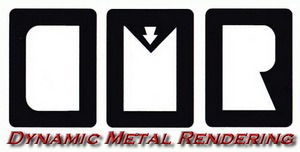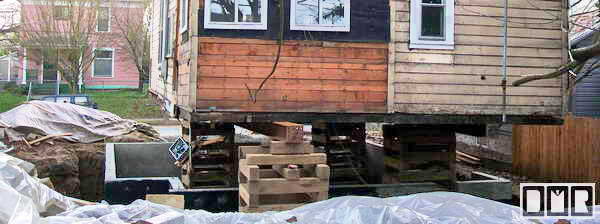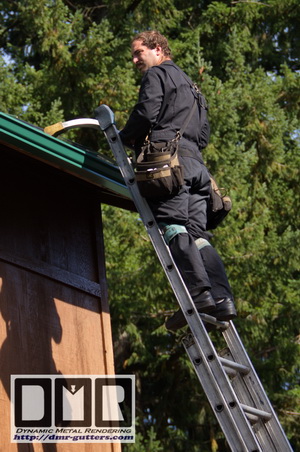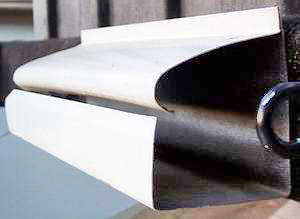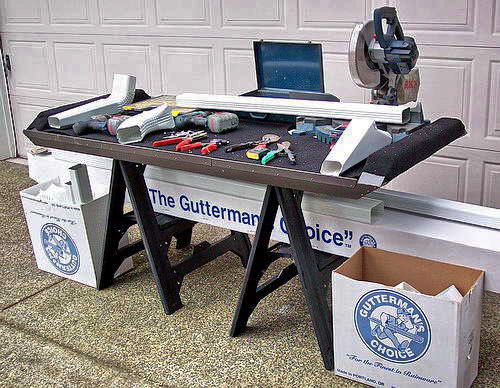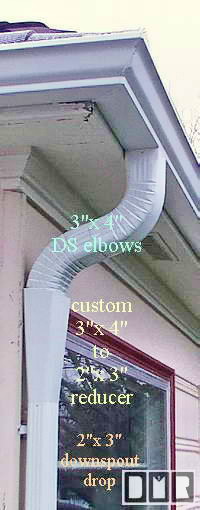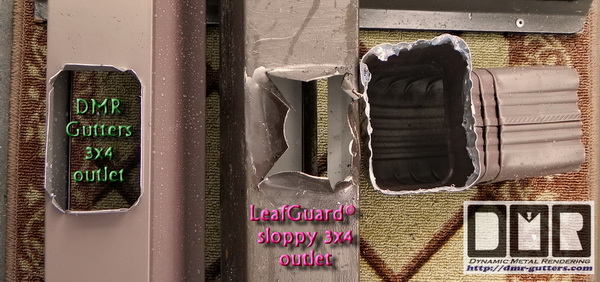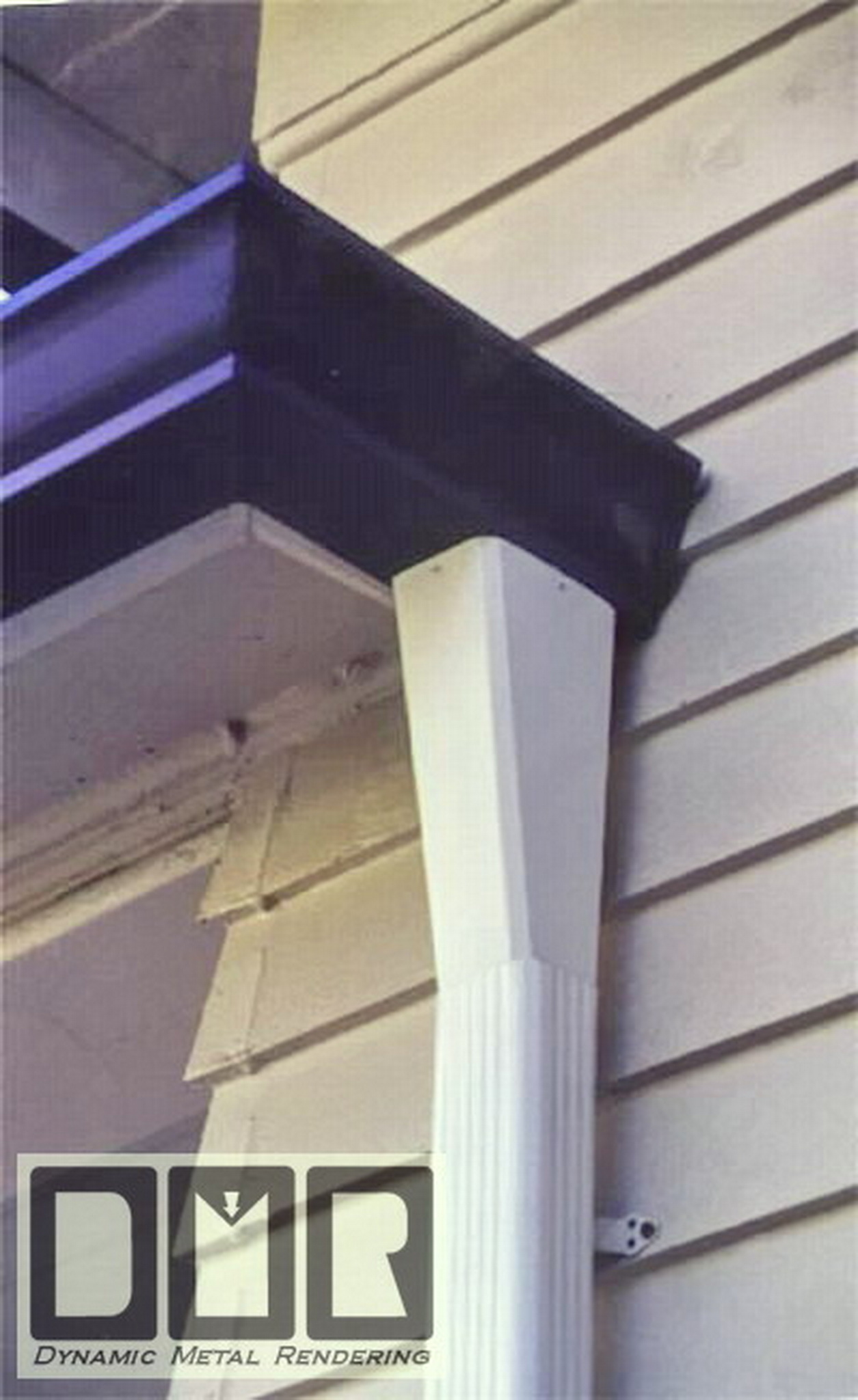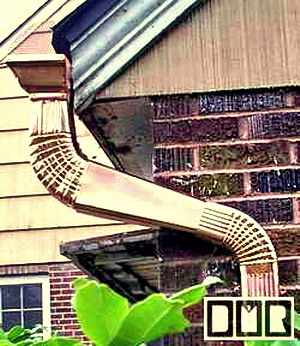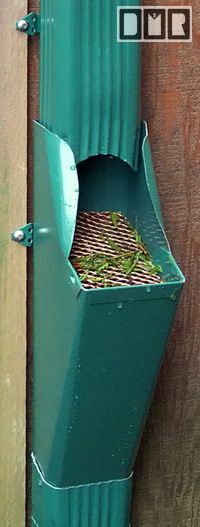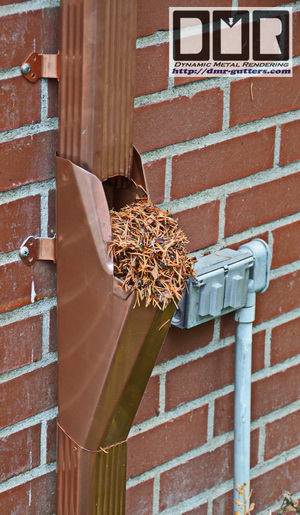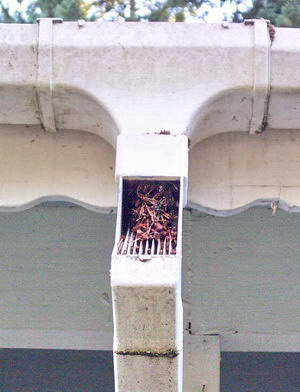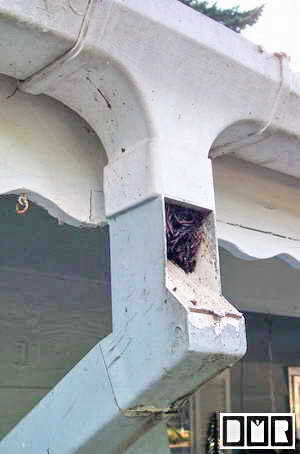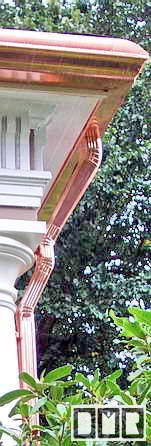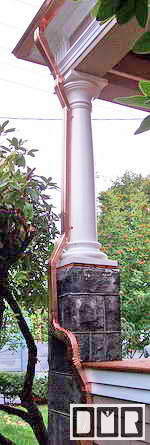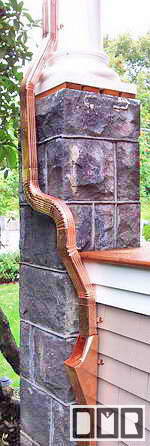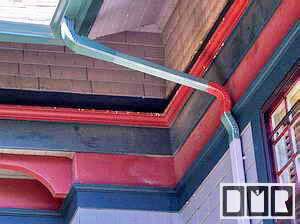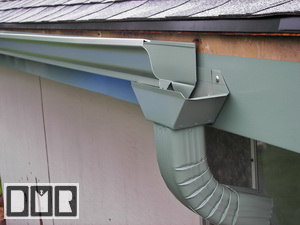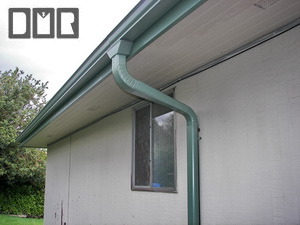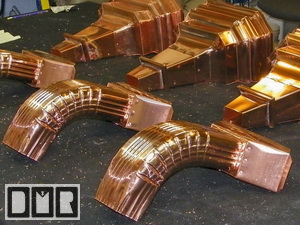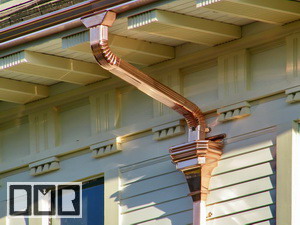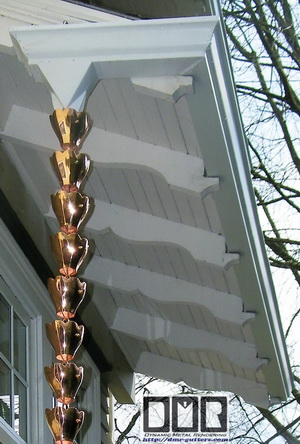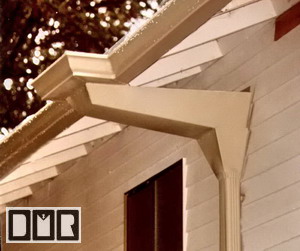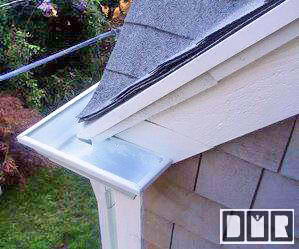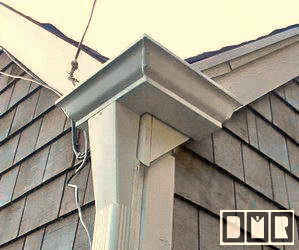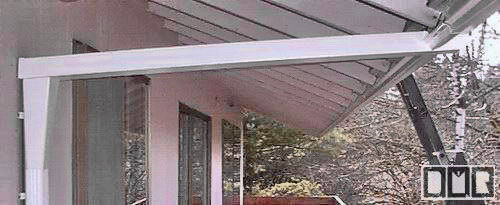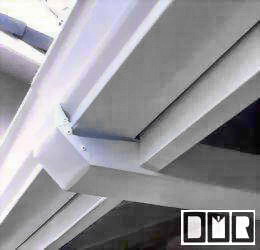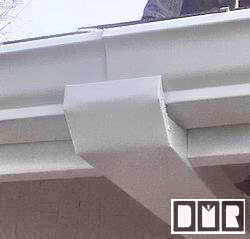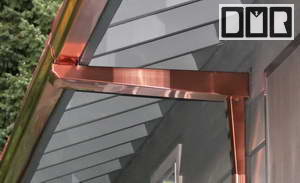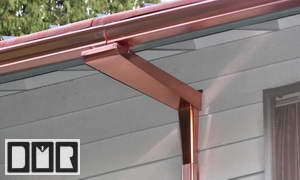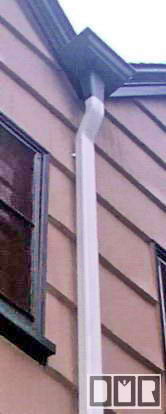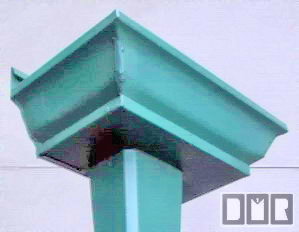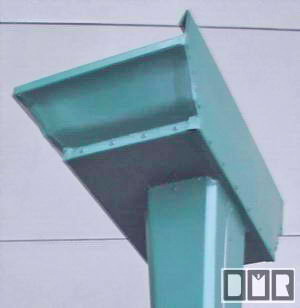|
The most common concern I get from potential clients is:
These wont keep pine needles out
of my gutters!
Yes, this is true, and I don't try to debate this
fact at all, which is why I stress the importance of a larger No-clog outlets
and Leaf-catchers in the downspouts. If a cover can keep out that sort of
small debris those filters will
also become clogged with that small debris in short order, and not allow
rain water to pass before long. I wish there
were a perfect solution for a gutter cover, but logically that is simply not possible, so
you will need to use a strainer that will continue to allow water
to pass. I have yet to see a better solution at any cost. I link to
dozens of companies web sites selling that sort of over priced snake oil
listed on my
Site Map page:
http://dmr-gutters.com/links.htm#Parts
This is why it is so
important to have larger outlets, which
LeafGuard®
also hinges their warranty on. Many ask if they need
a larger gutter. I remind them how if the outlet is still the same small
size, it will jam and fail just as quickly no matter how big the gutter is,
so that would not make much difference.
Even more importantly is the heavy moss growth inside the gutter
under any gutter cover. Nothing short of copper gutters will keep this from
happening here in the NW. Most Homeowners never get a chance to see this much moss growth,
because they are not able to leave their gutters alone for a decade. Here's
what it looks like after just 7 years or so of trouble free service under these
galvanized hinged screens I used through the 90's:
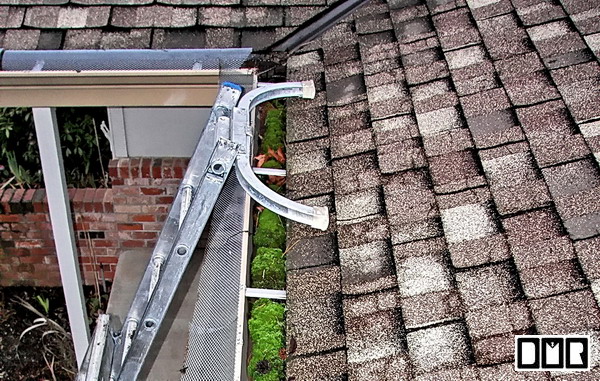
I have removed gutters from thousands of
houses in the Portland, OR metro area, yet I had never seen this sort of
moss buildup before. These gutters I had installed 7 or 8 years prior were still
draining. This demonstrates how this client: Stuart Surcamp in Millwaukie
was truly able to leave his gutters alone since I had installed them. He happen to
recognize my rig driving around and called my cell# listed on the side, to ask how
much I would charge to clean his gutters. I reminded him it wouldn't cost
anything if they've failed to drain properly. He said they were still
working fine, but imagined it was time to have them cleaned. I still went
over and cleaned
them out for free. While I was up there, I took this photo to show what can happen
if you are able to truly leave your gutters alone for that length of time.
How effective are just screens alone?
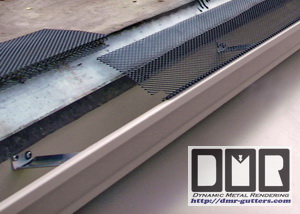 Our clients report that with just the screens alone they
find the need to clear out their gutters about 1/4th as often. The main benefit
is how these will keep out the larger debris that clog up the gutters
quickly: most leaves, pine cones,
branches, and toys or bottle rockets. A screen with a smaller weave like window screen is
far too fine
and will cause the rain water to cascade over the screen out past the edge
of the gutter before long. Especially at the bottom of a valley. I have
learned even this screen is not usable below a valley or drain from an upper
gutter. Our clients report that with just the screens alone they
find the need to clear out their gutters about 1/4th as often. The main benefit
is how these will keep out the larger debris that clog up the gutters
quickly: most leaves, pine cones,
branches, and toys or bottle rockets. A screen with a smaller weave like window screen is
far too fine
and will cause the rain water to cascade over the screen out past the edge
of the gutter before long. Especially at the bottom of a valley. I have
learned even this screen is not usable below a valley or drain from an upper
gutter.
To the
right is a close-up photo of the type of powder bake steel leaf screens I've
used since 1998 for use with aluminum and copper gutters
with one of the screens shown about to be installed.
Copper
screens: are 3X the cost and not very sturdy.
Some time before 2008 they
started making these screens with even thinner copper to help keep costs
down back when copper had doubled in cost. My
copper clients are expecting better than standard.
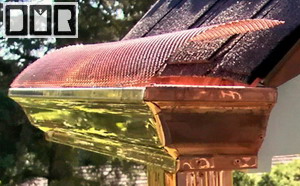 Not less than standard
quality and sturdiness. These sorts of opper gutter screens will end up getting
bent out of shape and even dislodged from the gutter within less
time than stronger steel screens would rust, so they're hardly worth the $.
Even though I can still get copper screens for clients getting
copper gutters they have wisely opted for the more practical steel screens. I am still looking for a supplier for better copper screens
or stainless steel screen to use,
but so far they want way too much even w/o attachment hardware. Not less than standard
quality and sturdiness. These sorts of opper gutter screens will end up getting
bent out of shape and even dislodged from the gutter within less
time than stronger steel screens would rust, so they're hardly worth the $.
Even though I can still get copper screens for clients getting
copper gutters they have wisely opted for the more practical steel screens. I am still looking for a supplier for better copper screens
or stainless steel screen to use,
but so far they want way too much even w/o attachment hardware.
Stainless
steel: would work, but they are more expensive than these copper screens, so
it is to pricy for aluminum, or even copper gutters.
Aluminum screens:
are too fragile and light weight, so they simply will
not work. They get blown off in a wind storm, or cave into the gutter from piles
of debris on them.
Steel screens:
I use these, since they are a strong product at a reasonable cost. They have a
good black powder-bake coating on the expanded metal. Personally I hate steel, but screens do not have
to hold water like a gutter does, so rust is much less an issue. This is the best products I have found at a
reasonable cost.
(these photos below also show the way
I
add expansion joints to long lengths of gutters to free up the pressure on
the sealed corners, to avoid future leaks from the expansion and
contraction of the sheet metal gutters, which is different than a wood
structure)
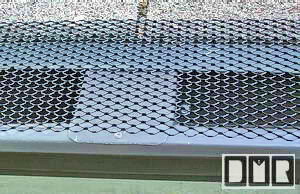 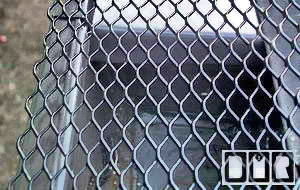
These photos below also show the way we
seal the end of a gutter at the base of a valley to catch that water,
instead of cutting the bottom of the gutter open there to dump that gunk on
the roofing, causing a mossy trail and wearing the shingles from that river
of water running down the roof.
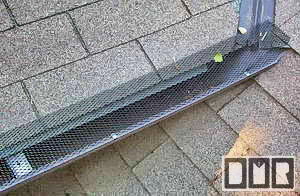 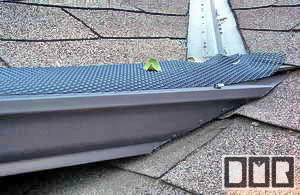
Advantages of our leaf screens over other products
available:
Strength:
They are made with a sturdy steel metal that will not cave into the gutter or get bent out of shape
so easily.
Stability:
They are heavier, so they are much less likely to blow off in wind
storm.
More Trouble Free:
They are angled, so leaves and other debris
will blow off the roof more readily, instead
of piling up over the gutter covers, just to decompose and turn to mud; not letting
rain water pass through the gutter screen and starting to grow plants
over your gutters. Which is the problem with most
other leaf screens or similar products I've seen.
Cleaning Simplicity:
These leaf
screens allow for easy visual inspection to see if there is a blockage, and
allow for gutter cleaning w/o
removing the leaf screens as long as you have the larger No-clog outlets
and Leaf-catchers. You can simply place a metal or plastic cover over
the screen of the Leaf-catchers in each downspouts, then just hose them
out right through the screens, flushing the debris down your
downspouts, where it simply dumps out on the ground.
It can then easily be scooped up from there and disposed of. With
this method of cleaning the smallest debris and even roof sand can be cleaned out of your gutters
without getting trapped in your underground storm drain pipes. Can you
think of a better system?
Effectiveness:
With these leaf screens there's over
ten times more area for the rain water to find it's way into the gutter
than any of the solid hood type covers sold. They have over 2X more open
area than plastic screens, so they are less likely to get clogged. (simply speaking,
LeafGuard®
and all the other types of hooded gutter product companies
may guaranty that their gutter will not clog, but they will not guaranty
their gutters will continue to accept water. There in lies their clever
deceptive loop hole).
Reliebility:
With our installing only these type of leaf screens is how I show I can
afford to maintain my 'No-clog Warranty', since it
is a lot easier to
clear out the debris from under these screens
(not having to replace the whole gutter to
solve the problem, like with the
LeafGuard® system). These
screens will still keep out a good 90% of debris we have here in the
Northwest: branches, pine cones, most leaves, toys, and much of the pine
needles that will jam up your gutters quickly. We do not try to
claim they will keep out all debris, hence the importance of the large
outlets and Leaf-catchers to handle the small debris that will get through
these screens and the moss that will form inside the gutters if left
alone. This is most important in
the event that later on the company responsible for their warranty is
unable to fulfill their obligations for what ever reason, and you are stuck with a product that is not working and impossible for you to
resolve these issues. Always an important detail to consider before any
purchase.
Cost:
These leaf screens
cost far less than any of the
LeafGuard® gutters type hood systems you can get
or most other screen products sold.
The cost is only
$1.75 if you can install them yourself, or
2.50 per foot installed on houses
w/o complications with a new gutter replacement, or $3 ln' for over your existing
gutters w/a gutter cleaning.
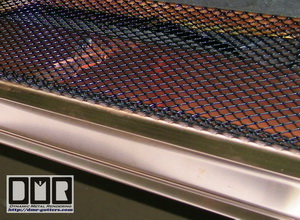 There are dozens of different alternative add-on hoods like the
LeafGuard®
system that also
cost a small fortune, and we link to several of their web
sites on our Site Map web page.
Even if they worked as well as they claim
(which
they don't) all of those sort of add-on
leaf protection hoods have a wholesale cost that is more expensive than
our retail cost of our screens installed, and they are more difficult
to install. Why would you pay over 2 to 3 times the cost for those
sort of hood than the cost of a new aluminum gutter? Even if they did work
as they claim. I do not believe a gutter cover should cost more than a
new gutter. Let alone more than the cost of our aluminum gutters hung with
hidden hangers and stainless steel screws. That's insane! There are dozens of different alternative add-on hoods like the
LeafGuard®
system that also
cost a small fortune, and we link to several of their web
sites on our Site Map web page.
Even if they worked as well as they claim
(which
they don't) all of those sort of add-on
leaf protection hoods have a wholesale cost that is more expensive than
our retail cost of our screens installed, and they are more difficult
to install. Why would you pay over 2 to 3 times the cost for those
sort of hood than the cost of a new aluminum gutter? Even if they did work
as they claim. I do not believe a gutter cover should cost more than a
new gutter. Let alone more than the cost of our aluminum gutters hung with
hidden hangers and stainless steel screws. That's insane!
Longevity:
Our leaf screens are coated
with a black powder bake finish, which makes them very inconspicuous. We've
had difficulty figuring out a way to photograph them to show what they
are like, since they blend in so well. I have been using these for well over
a decade and have yet to see them rusted out.
Do
Gutter Hoods Really Work?
If you have no debris issues they will work swell, but of course that
would mean you have NO need for a gutter cover. I've personally seen many
examples where they will get jammed with debris in the small area for the
water to enter the gutter and will create a waterfall situation killing your
landscaping or worse. These companies are not obligated to solve this or
refund your money, since the gutter did not clog, but why have gutters if
they are not going to manage your roof water?
Example:
We had a client
named Mr. Bronson, who ordered some covers to install over his existing gutters
he got from the
Brookstone
catalog that use the same
principle as the
LeafGuard® system. He had a
steep roof on a two story house, so he had us install them. Within one year he called
us back to hire us again to remove those gutter covers and install the
hinged leaf screens that we recommend. He reported that with the other
metal covers; pine needles would get stuck in the small opening, where the water is to seep in.
This blockage would encourage the water to pour off the end and caused a water
fall over places like his doorway (no joke).
Debris will quickly get stuck in the crevice for the water to seep into
the gutter. Well before it turns to mud as it decomposes, it will cause a waterfall over the
edge of the gutter.
As we said above, they may guaranty that the gutters will not clog, but that does not
even suggest that the gutters to continue to accept the rain water. It also does not
allow for inspection of the debris build-up in the gutter, let alone anyway for
simple access to clean it out. We have since refused to install these sort
of hoods at any price, since it clearly goes against our ethics.
What about pine needles?
We will not kid you about the issue of pine needles.
These screens may do well to
stop about 50% to 60% of small pine needles from going into the gutters. That is why
it is so important to have the large
industrial size outlet along with the Leaf-catcher strainer down near
the ground in the downspouts. Between this 3 part protection system, we
have had very little call-back issue after installing these No-clog
options on thousands of houses since 1996. There is no better product out
there for these issues we've found at any price, no matter what their claim
(see our
comparison
web page for more details). You will still have the roof
sand settle in your gutters and moss will grow inside, so it is
good to be able to be able to see and get in there to clear it out from time to time, but
that's not required with our
No-clog installation
warranty. We have put these itemized options on each bid, with
no pressure to take all or nothing, but only around 20% of our clients
in the last 15 years have us install gutters without these options,
so we have had a pretty sizable number of installations to gather this research
from. |
